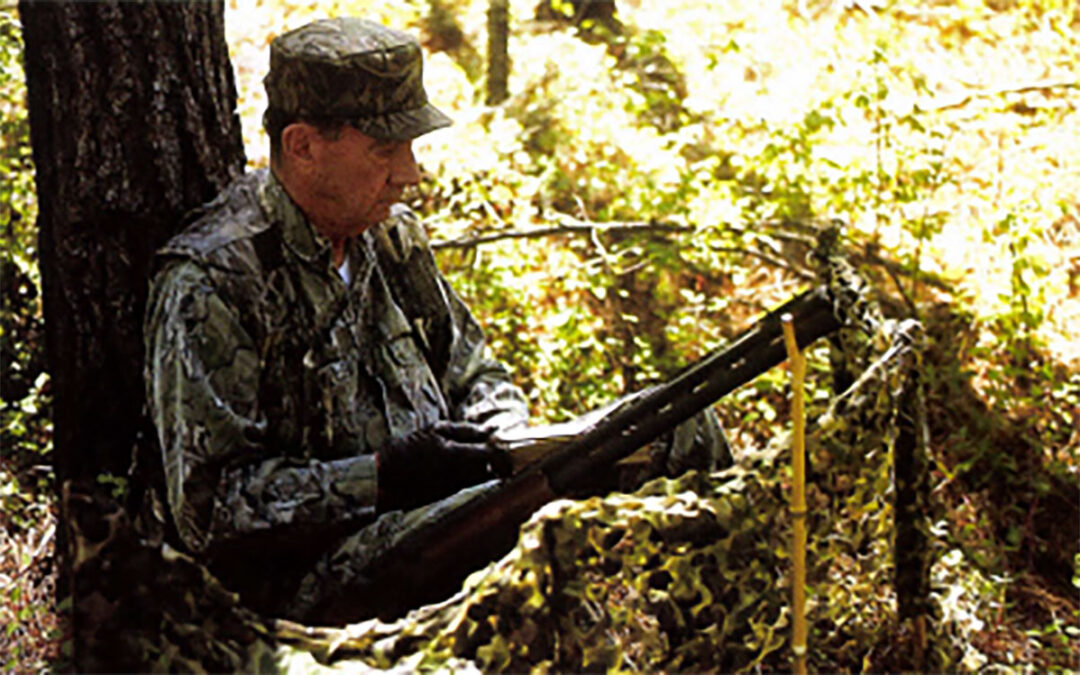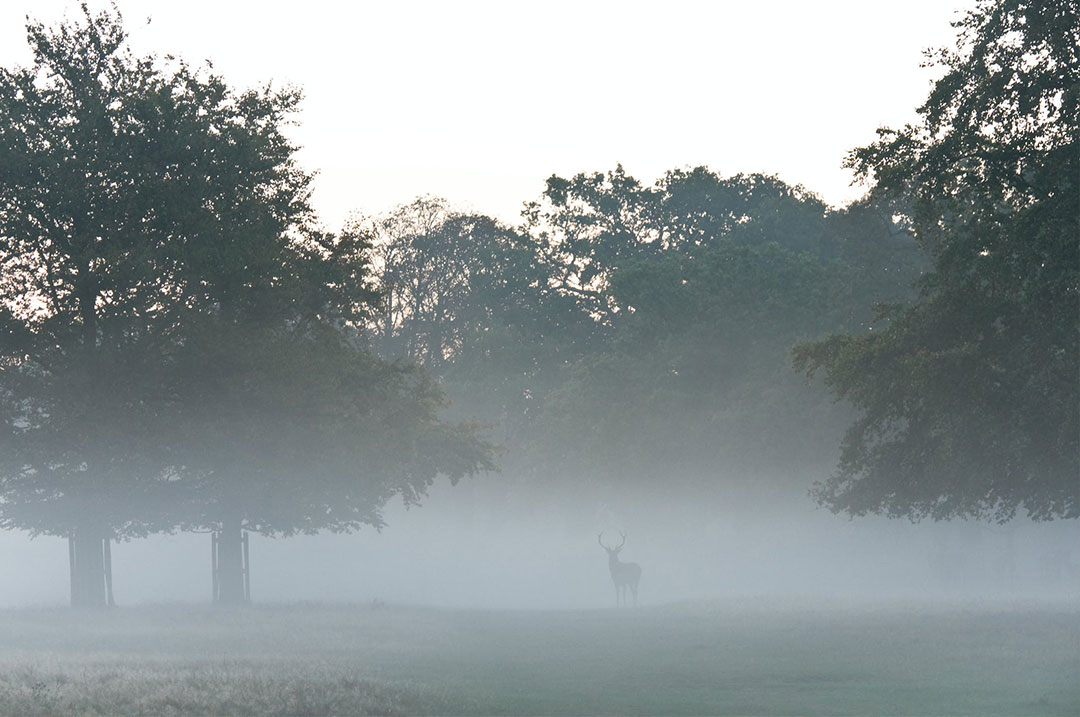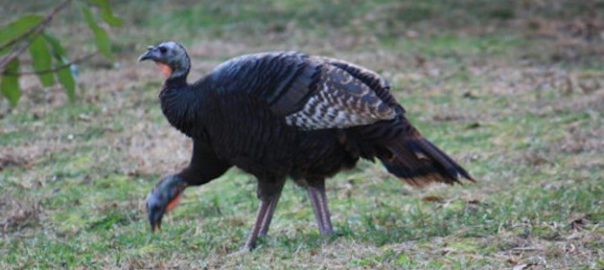There are a couple of rather elementary ground rules that apply under such conditions and, strangely enough, a great many people find them difficult to follow.
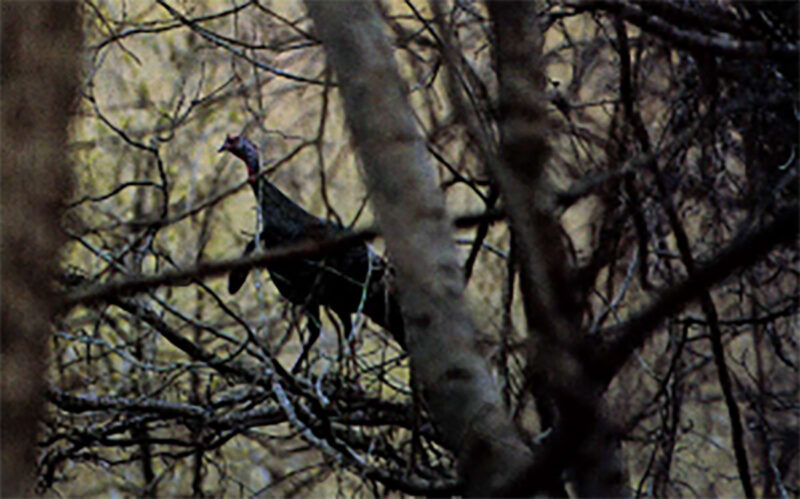 Anyone who has chased turkeys for any length of time, assuming he is a realist and does not suffer from a terminal case of egomania, eventually comes to the conclusion that there is a degree of luck inherent in the business, no matter what level of expertise he may have achieved or what degree of pride he happens to take in that skill.
Anyone who has chased turkeys for any length of time, assuming he is a realist and does not suffer from a terminal case of egomania, eventually comes to the conclusion that there is a degree of luck inherent in the business, no matter what level of expertise he may have achieved or what degree of pride he happens to take in that skill.
Something besides skill sends you down the right woods road. Something makes you stop and listen at the head of the proper hollow. If you hear a turkey gobble there, he will most likely be in a place that lets you get within two hundred yards of him without having to wade through chest-deep water. No herd of deer runs between you and the turkey after he has flown down and started in your direction, and the luck of the draw puts no impenetrable briar patches between the two of you to turn him aside.
Pretty much all of this can be thrown into either one of two classifications: neutral luck, or an absence of bad luck, and either is clearly within the scope of the normal probability tables. Every once in a while, at irregular intervals, something falls out of the range of normal percentages: the streak of luck is neither neutral nor indifferent, and you get something you really didn’t deserve. Whoever happens to be duty officer of the World that day decides you should have the Soldier of the Month Award, arranges for you to be selected, and presents you with the unearned trophy.
I have had a few of these awards, mostly at widely scattered times over a long and checkered career, and I have found that invariably, having heard the tune, I have had to pay the piper.
But this year was different. This year not only were the tables of probability skewed, they were shattered. Because early this past season I did not have one of those incandescent visitations of Angelic generosity, I had two, and they happened to come on two successive days as well.
I was invited to hunt near Jacksonville, just south of the St. Mary’s River which, in that area, forms the state line between Georgia and Florida.
Florida’s northern border begins at a point where the 31st parallel crosses the Perdido River in Baldwin County, Alabama, and runs 150 miles east along that parallel, with the exception of a jog in the line near Seminole. At that point the border between the two states becomes the St. Mary’s and each state carefully remains on its own side of the river until the St. Mary’s gets to the Atlantic Ocean.
Using the river as a bound my results in Georgia picking up 120,000 acres of land in one spot at the expense of giving up 287,000 acres in another. This irregularity was created years ago in the interests of peace, harmony and self-preservation.
Florida, until 1821, was part of Spain. Every bad ass in Georgia, such as holdup men fleeing from vigilantes, escaped prisoners, thieving Indians, people who might properly becalled the sweepings of the frontier, skipped across the line to escape the law. Georgia, naturally enough, would have preferred to have 50 miles of saltwater between themselves and the collection of bad actors gathered below the line.
Since no such geographical barrier was available at the time, they settled for second best. The presence of a river was so infinitely superior to a plain, arbitrary line drawn on a map, that giving up a trifling 167,000 acres of land was considered a real bargain. The fact that history, in its usual implacable fashion, has turned a bargain into a burden cannot be helped. The fact that the thought processes of those Floridians who live at a point that is geographically north of the Georgia state line are more closely attuned to the attitudes of Georgians is simply something everybody lives with.
Anyway, I was invited to hunt in this never-never land between the two states and for the second time in three years I accepted.
For those who hold the same set of beliefs as I do, namely, the fact that knowing the ground on which you hunt is the most important facet of turkey hunting, the matter of going to a strange place without an opportunity to familiarize yourself with the area beforehand usually constitutes a Crippling handicap.
Arriving at the ground in the dark, with nothing better than a map reconnaissance done over a bourbon the night before, is bad. What is even worse is an orientation consisting of a hasty diagram, drawn by flashlight, in the dirt of a woods road as you are dropped off before daylight. Even if you put both of these together, the result is nothing but a location, and an inferior grade of location, to boot, considering the circumstances.
Knowing you are bordered on two sides by the St. Mary’s River and that you are west of the Atlantic and North of Interstate 10 is a location. But it is a location that describes nearly three quarters of a million acres and, as such, would be perfectly adequate to point out the position of a glacier. It is a trifle broad in scope to be considered helpful in locating a single turkey, no matter how much that turkey may decide to gobble at daylight.
Nobody does these things to you deliberately. There is no conspiracy to deny you every advantage or to withhold as much advance data as possible. But airplanes sometimes get in late and darkness always falls after the sun goes down, and time will not always permit you to come a day early and scout the ground properly.
As a result, you can either allow yourself to be carried along the next day as useless baggage, or you can pick up your bucket where you are.
There are a couple of rather elementary ground rules that apply under such conditions and, strangely enough, a great many people find them difficult to follow.
The first of these is that since it is dark, and since you not only don’t know where you are but you don’t know where anything else is either, the most intelligent course of action is to do nothing. Simply stand still and shut up until either you hear something, or it gets light enough so you can see well enough to move.
This is as easy to say and as difficult to do, as anything you can imagine, because of our remarkable tendency to out-think ourselves.
Wandering around in the dark, stumbling over unseen obstacles and running into vines and trees, is not only noisy as hell but can often be painful. Nobody really wants to do this and nobody ever would, except for the fact that he feels driven. Believe it or not, the thing that drives him is the fear of light.
Ninety-nine and 44/100 percent of the turkey hunters in the world believe that the sight of headlights and the sound of cars or pickups running along woods roads in the dark disturbs turkeys.
So, as a consequence, standing there in the dark, even though you really don’t have any logical grounds to think so, you convince yourself that the best thing to do is move off the road a little way, into an area that is somewhat less disturbed.
You leap to the erroneous conclusion that the surrounding 40 acres have all been used up, that they’ve been deducted from the area you have to hunt by the noise and bustle of your arrival, and since these events remove any suitability they may have had for your purposes, logic therefore demands that you move to some other place that is suitable.
Not only is this not logic, it is not even a good grade of illogic. It is best called twitchy stupidity.
Turkeys are perfectly capable of making cognitive deductions. They do it all the time. But they have to have familiar circumstances upon which to base these deductions.
A turkey gobbling in a tree overlooking a pasture will instantly stop when a man steps into the pasture at daybreak, even if the man is 300 yards away.
The turkey understands the situation could become threatening, and in a great many cases not only stops gobbling but instantly flies off.
A turkey will flush from a tree at night, but I think it is the noise as much as anything else that moves him. If you think back, you will recall many instances in which a turkey began to gobble at daylight within fifty or sixty yards of the point where a vehicle with its headlights turned on passed him in the dark a half-hour ago.
Changing locations before daylight in unfamiliar territory, based on a perception that you have rendered the original spot useless by the simple act of arriving in the dark, is straining at gnats. The second of the “elementary, my dear Watson” moves that everybody knows but often forgets is the practice of trying to trigger a gobble before you move.
If you have managed to sit on your proclivity to wander around in the dark, have firmly kept yourself in place and a turkey gobbles just as it begins to get light, you win. Not only do you win, but you win comfortably. You know where to go and what to do and how to act after you get there. Things got easy all of a sudden.
But if no turkey gobbles, if all you hear are the noises of the world waking up — minus any noises made by turkeys — what assurance do you have that there is not a tom within 150 yards of you that, for one reason or another, did not gobble?
The answer, of course, is that you have no such assurance. No Leprechaun is going to appear with a sign that says, “All ye abandon hope. There are no turkeys here.”
On the other hand, no woods Brownie is going to come up and whisper in your ear that you should be extremely careful because there is a 20-pounder roosted 200 yards to the northwest.
The way you compensate for this critical shortage of Leprechauns and Brownies is to declare your presence.
Run out one final pop fly before you leave, and tree yelp, or caw, or hoot or do whatever it is you do to trigger a gobble. You may not make anything happen, but until you have declared your presence as a spurious hen, you have not done everything you can to initiate the action.
Palm Sunday morning, at daylight, on the south bank of the St. Mary’s River, required no such declaration.
The action opened when the first turkey gobbled at just about the time you would have turned to a companion and said, “Any time now.”
He was on the near edge of probability from the very beginning. If pressed, you could have worked him from where I stood, but just west of me was a narrow hardwood creek and I concluded that he had to be on the other side of it. If he had been on my side, he would have been so close I wouldn’t have dared to move. The creek bottom crossed the road a hundred yards ahead of me and I decided to risk half that distance.
I eased along the woods road and had just made it to the edge of the creek when he gobbled the second time.
The whole thing was teetering along the ragged edge of tragedy. I couldn’t have approached too close or he would not have gobbled again, but he sounded as if I was standing right under him. The metaphorical ice had gotten very thin indeed.
I stepped sideways out of the road, sat down and had unrolled the blind and cut three palmetto fronds when I heard a turkey fly down. I wedged the fronds into my blind and had just leaned back against the tree when I saw another turkey sail down.
At my first yelp, one of the two birds gobbled right back, almost cutting me off, and I then saw the two of them cross the road in front of me, going left to right, one bird some 20 yards behind the other.
They were quartering toward me but would pass to my right well out of range. Before they got to the point directly abreast, a point where I would have to make either of them change direction sharply, I clucked twice.
The lead bird did a right oblique without altering his movement a particle, and ten steps later I pulled the trigger.
There is a school of thought which holds that if you are calm and cool, and totally confident of your marksmanship, you should quietly get up after you shoot and saunter out to the downed turkey. Your demeanor should exhibit the same savoir vivre that a man uses to help himself to the after-dinner brandy.
I am not a graduate of that school. After I pull the trigger, I get up and go with the same enthusiasm I would exhibit if I were trying to get to a tree ahead of a charging lion. You cannot beat the charge of shot out to a downed turkey, but you can come in a close second. You need to get there quickly because it is the dead one that gets up and runs off.
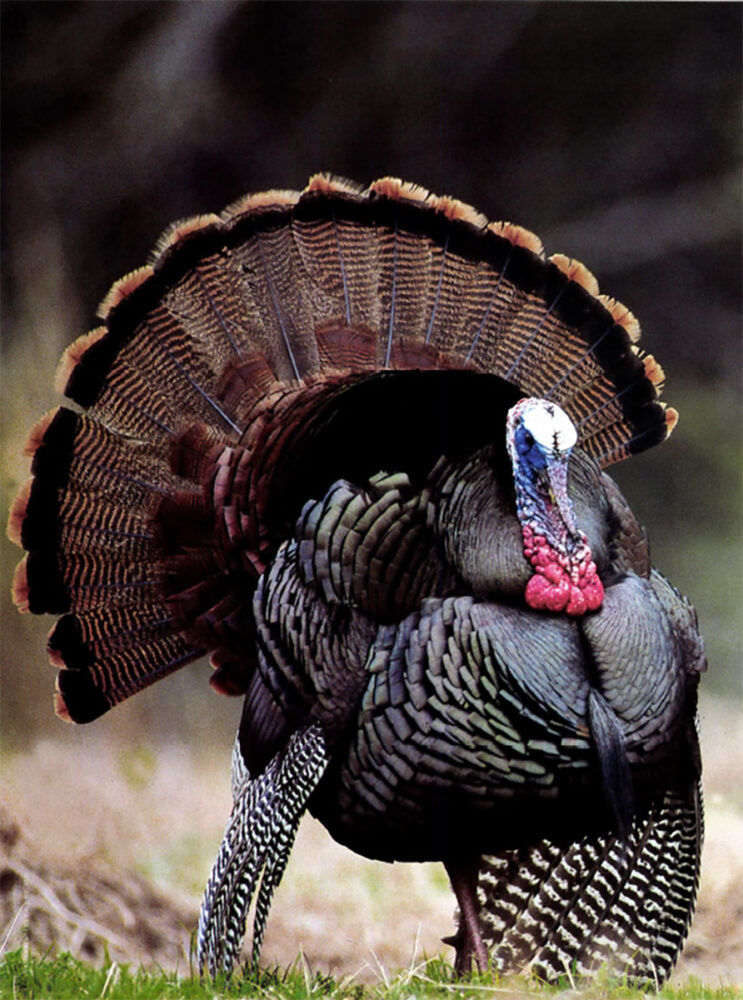 The second of the Palm Sunday turkeys, the trailing bird, stayed in place until I had gotten nearly out to the downed gobbler. I did not notice him at first, being fully occupied with the one flopping on the ground, but I caught his movement out of the corner of my eye. He had stood there and watched, easily in gun range, before he finally wheeled and ran off.
The second of the Palm Sunday turkeys, the trailing bird, stayed in place until I had gotten nearly out to the downed gobbler. I did not notice him at first, being fully occupied with the one flopping on the ground, but I caught his movement out of the corner of my eye. He had stood there and watched, easily in gun range, before he finally wheeled and ran off.
I have seen young gobblers do this. In fact, I have seen several in a drove of gobblers begin fighting a bird that’s flopping around after the shot. Turkeys being trapped with drugged corn often do the same thing. The boss gobbler, who feeds first, feels the effect of the drug and as soon as he gets wobble-legged the subdominant birds try to improve their places in the pecking order.
I have not seen many old gobblers do the same thing, and I can only suppose that the trailing bird was subdominant and reluctant to leave until he became positive that his promotion was permanent and that command had truly shifted. He may have even toyed with the idea of offering a warm handshake, along with his profound thanks, for my efforts in transferring the ownership of the harem into a far more deserving set of hands.
From where the first turkey gobbled on his roost to where the truck had dropped me off on its way north was a scant sixty yards and the driver had not turned off his headlights.
I took the trouble to pace back down the road from my makeshift blind to the point where I stood in the road over the map drawn with the pointed stick. It was an even eight chains. For the benefit of those non-timber cruisers among you, eight chains is 176 yards.
There will, of course, be a payback, and simple justice requires that the nature of the payback be brutal. Because the Palm Sunday turkey was preceded by a Palm Saturday turkey, just as big, just as easy, with the elapsed time between initial contact and sound of shot being substantially under 15 minutes.
Naked, bare foot and in chains, maybe, behind a fast chariot along rocky streets. Under a low, tight circle of vultures. Having dealt with her for many years, I am confident that the blindfolded lady with the scales will think of an appropriate punishment.
This article is excerpted from “Palm Sunday at St. Mary’s,” one of 16 essays in Tom Kelly’s book, A Year Outside.
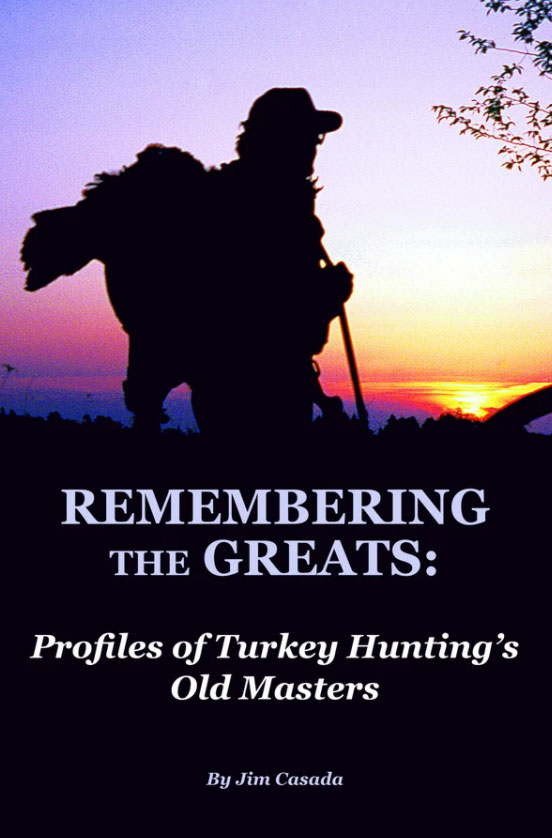 In Remembering the Greats, a 317-page hardbound book, Jim Casada brings his training as an historian, his decades of studying the grand masters of the sport, his avid collecting of the literature, and his personal hunting experiences to bear in a detailed examination of the careers of 27 icons from turkey hunting’s past. Collectively they epitomize the essence of what old timers sometimes refer to as true “turkey men.” Buy Now
In Remembering the Greats, a 317-page hardbound book, Jim Casada brings his training as an historian, his decades of studying the grand masters of the sport, his avid collecting of the literature, and his personal hunting experiences to bear in a detailed examination of the careers of 27 icons from turkey hunting’s past. Collectively they epitomize the essence of what old timers sometimes refer to as true “turkey men.” Buy Now

